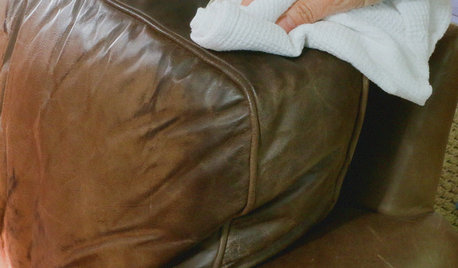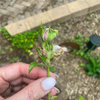Have you tried milk as a remedy for mildew?
socks
13 years ago
Related Stories

DECORATING GUIDES10 Ways to Hide That Air Conditioner
Feeling boxed in designing around your mini-split air conditioner? Try one of these clever disguises and distractions
Full Story
GARDENING GUIDES6 Plants for Colorful Fall Foliage in the Water-Wise Western Garden
Try these colorful, drought-tolerant additions to your garden for a fall season filled with color
Full Story
HOUSEKEEPINGHow to Clean Grout — Stains and All
If your grout is grossing you out, this deep-cleaning method will help it look new again
Full Story
HOUSEKEEPINGHow to Clean a Glass Shower Door
See which tools and methods will keep those glass shower walls and doors sparkling clean
Full Story
KITCHEN DESIGN12 Items Worth a Spot on Your Kitchen Counter
Keep these useful tools and accessories out in the open to maintain high function without spoiling the view
Full Story
GARDENING AND LANDSCAPINGShade Sails: Outdoor Rooms Take Wing
Futuristic looking yet a terrific complement to both traditional and modern landscapes, shade sails lend a sculptural quality to patios
Full Story
GARDENING GUIDESTop 12 Summer-Blooming Perennials for Deer-Resistant Drama
Can you have garden color, fragrance and exciting foliage with hungry deer afoot? These beauties say yes
Full Story
Common Household Cleansers for Leather Upholstery
Clean and condition your leather sofa, chairs, handbags and more with ingredients already in your cabinets
Full Story
GREEN BUILDINGHow to Start Finding a Greener House
On the hunt for a more ecofriendly house? Here are the questions to ask and research to do
Full Story
MOST POPULAR33 Magic Household Cleaning Tips
Houzzers from around the world share their tips for transforming housework into child’s play
Full StorySponsored
Industry Leading Interior Designers & Decorators in Franklin County
More Discussions








jim1961 / Central Pennsylvania / Zone 6
wirosarian_z4b_WI
Related Professionals
Windham Landscape Architects & Landscape Designers · Fillmore Landscape Architects & Landscape Designers · Taylorsville Landscape Architects & Landscape Designers · Billerica Landscape Contractors · Canton Landscape Contractors · Edmond Landscape Contractors · Alamo Landscape Contractors · Belmont Landscape Contractors · Dedham Landscape Contractors · Hayden Landscape Contractors · Lemay Landscape Contractors · Mount Sinai Landscape Contractors · Pleasant Prairie Landscape Contractors · St. Louis Landscape Contractors · Four Corners Landscape ContractorssocksOriginal Author
kstrong
karl_bapst_rosenut
henry_kuska
hoovb zone 9 sunset 23
serenasyh
roseman
pamelasv
kstrong
henry_kuska
michaelg
henry_kuska
serenasyh
kstrong
FrozeBudd_z3/4
judith5bmontreal
serenasyh